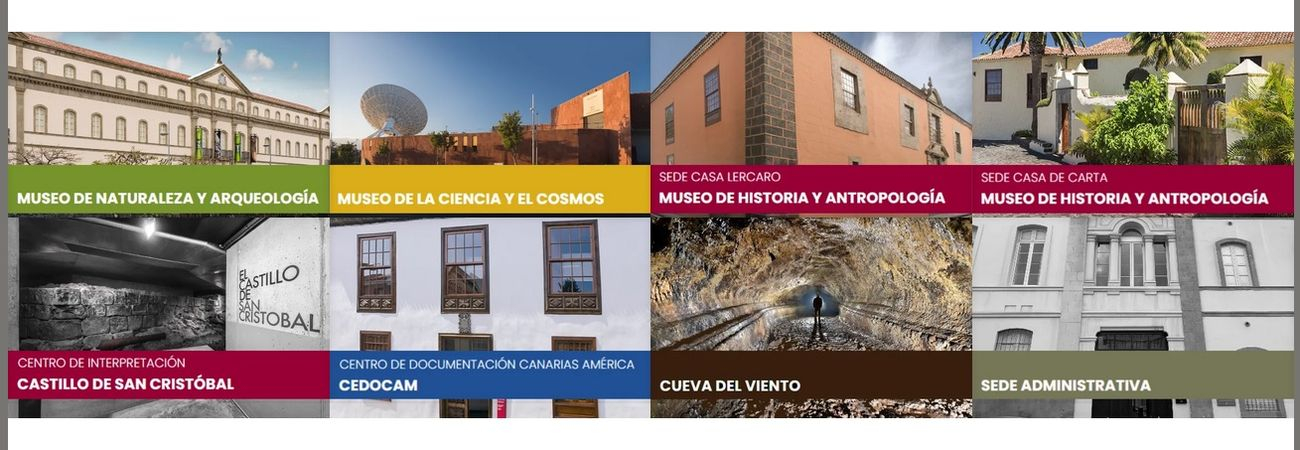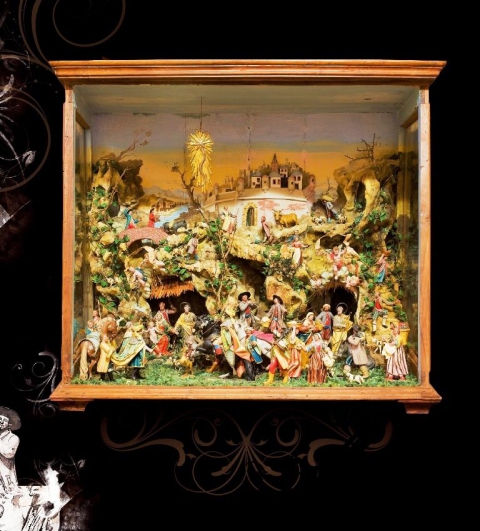La Laguna
HISTORY MUSEUM
C/ San Agustín, 22 (Casa Lercaro)
Phone: 922 825 949 - Fax: 922 630 013
38201 San Cristóbal de La Laguna
Opening Times:
Tuesday to Saturday from 9 a.m. to 8 p.m.
Sunday and Monday from 10 a.m. to 5 p.m.
The History Museum and Island Archives are located in an old mansion, the magnificent Casa Lercaro, which dates from 1593 and belonged to the Lercaro family. The History Museum offers detailed information about the civil, military and religious history of the island. Its teaching task is accompanied by many significant objects from the different periods in history covered by the museum. You can also see the largest collection of maps, navigational charts and geographic illustrations in the Canary Islands.
The eleven rooms are equipped with explanatory panels that give you an overview of how Tenerife has developed institutionally, socially, economically and culturally since the 15th century.
There is an extensive collection of maps of the Canary Islands, some dating from the 16th century.
In a permanent exhibition hall dedicated to the Lercaro house and family, in the Tenerife Museum of History and Anthropology in La Laguna, the Island Council is displaying a nativity scene from the end of the 18th Century, so that visitors can enjoy it every day of the year, without having to wait for Christmas. It is part of the digital section "Did you know...?".
The nativity scene is of a high artistic value, and is presented on a rocky background showing a walled city. Within this almost scenographic frame are figures which are harmoniously distributed, revealing two births within the same nativity scene to those who stop and observe. One scene, to the right, represents the shepherds' adoration of the Holy Family and the other, to the left, the adoration of the Three Kings.
It is made up of fifty polychromatic wood figures representing sheep, angels and the human and divine representations, as well as the star, which is masterfully suspended in the upper part, radiating its metaphorical light over the whole scene.
The work was ordered directly from Genoa in 1765 by Catalina de Ponte, widow of the serviceman Ángel Lercaro Justiniani. It reached a total of 1,241 lira according to an expense note signed in this city. Although the nominal authorship of the work is still unknown, the work of experts in different fields has been recorded such as sculptors, painters, goldsmiths, carpenters, silversmiths and blacksmiths, amongst others.
MUSEUM OF SCIENCE AND THE COSMOS
C/ Via Lactea, s/n (near the Canary Island Astrophysics Institute)
Tel: 922 315 265 - Fax: 922 263 295
38200 San Cristóbal de La Laguna
Opening Times:
Tuesday to Saturday from 9 a.m. to 8 p.m.
Sunday and Monday from 10 a.m. to 5 p.m.
Large groups should arrange their visit in advance.
The Museum of Science and the Cosmos celebrated its twentieth anniversary in May 2013, proving to be a great success with the public right from the beginning.
The museum offers many interactive displays. It is organised into a series of independent modules that provide information on many different scientific aspects. Visitors can take an active part in the process.
Apart from more than one hundred in-house produced scientific modules, the museum also has a planetarium. The three-story building, designed by Jordi Garcés and Enric Soria has a sober exterior and ample lines.
Exhibitions are organised in five areas: the Sun, the Earth, the Universe, the Human Body and How Does it Work?, with a total of some 70 modules laid out in an elliptic hall like a market square, where a curious visitor can wander around and trip over adventures.
TENERIFE ANTHROPOLOGY MUSEUM
Carretera Tacoronte - Valle de Guerra (Casa de Carta)
Tel: 922 546 300 - Fax: 922 544 498
38270 Valle Guerra (La Laguna)
Opening Times:
Monday to Sunday from 10 a.m. to 5 p.m.
The Tenerife Anthropology Museum is devoted to investigating, conserving and disseminating the popular culture of the Canary Islands. Located in the splendid Carta Mansion, a Canary Island country house of the 18th century, it currently offers a grand exhibition "Food and Culture", showing different aspects of the social and cultural dimensions of food. The museum places special emphasis on teaching activities, organising workshops throughout the year.
Museum of Religious Art of the Monastery of Santa Clara
Located in the Monastery of Santa Clara, whose Convent was declared a Site of Cultural Interest (BIC) in the Canary Islands, with the category of Monument in 1978.
Opening Hours: Thursday and Saturday from 10 am to 5 pm
C/ Viana, nº 38.
Tel: 922 25 72 60
The Museum, which has been built using resources and items from the monastery itself, is divided into seven rooms reflecting the past and present of convent life.
The first room is called Immaculate Conception (Regina Coeli) and is devoted to the Virgin and especially to the Immaculate Conception, revered by the order of Saint Francis. The name of the second room is Seraphic Order, and it is devoted to all of the Order's saints, as well as the nuns who have died in the odour of sanctity. The third room is known as Who is like God, the cry of Saint Michael the Archangel, the protector of the Order. It also acknowledges the Convent of San Miguel de las Victorias (where they stayed until the current convent was built). It also has collections of nativity scenes and the three kings, amongst others.
The fourth room is that of Corpus Christi, holding a large proportion of the gold and silver pieces used in the Eucharist. The fifth room is that of the Redemption, where a collection of paintings of Christ of La Laguna can be found. The sixth room, De Profundis, displays the silver altar which presides in the convent church during certain celebrations, and it is a good example of the prestige acquired by the goldsmiths in La Laguna in the 18th Century. The seventh is the Screening room, showing a video of the Convent's history, and there is a world map displaying all of the Poor Clare convents throughout the world. All of the rooms are connected to three patios and four cloisters which can also be visited. The Museum will open on Thursdays and Saturdays, from 10 am to 5 pm (groups of more than 10 people may be able to visit on other days).
The Museum of Religious Art of the Monastery of Santa Clara de Asís (opened in May 2013) is the only museum in the Canary Islands which is located within an active convent and it is also the first convent of Poor Clare nuns established on the archipelago.
The Convent of the Saint Clare Nuns dates back to 1575 and houses an interesting historical and artistic heritage. Declared as a listed building with the category of Monument, it is a cloistered convent owned by the Poor Clare sisters (Diocese of Tenerife).








